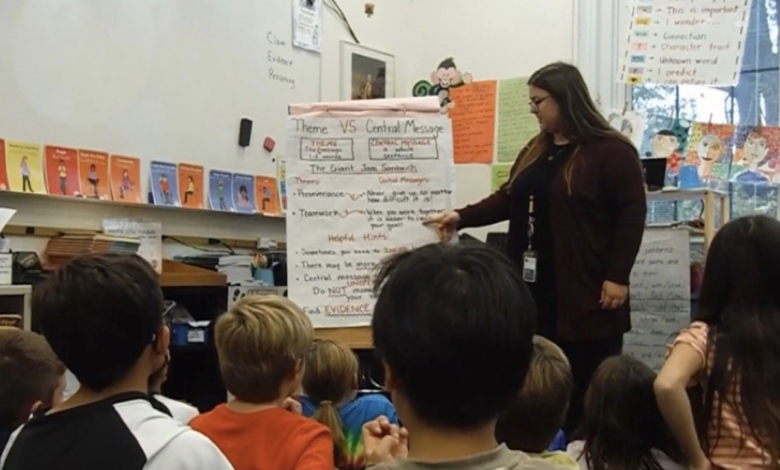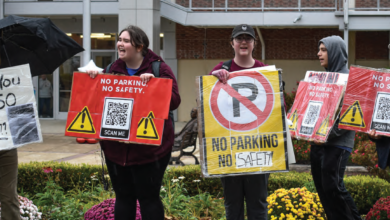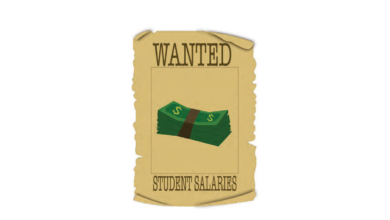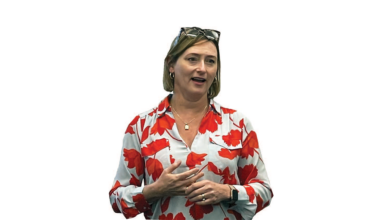
‘The teacher lens’: Rider talks about mass shooting preparedness
By Shaun Chornobroff
DURING a fall lockdown drill at Hopewell Valley Elementary School located less than 10 miles from Rider, Allison Pitner, a senior elementary education major and student teacher, observed a number of different reactions from her students. She noticed every child, from her most well-behaved to her troublemakers, grabbing items to protect themselves, hugging their friends and making themselves aware of their surroundings.
Most of all, Pitner noticed fear from her students who were not notified of the drill. “They knew the procedure and they knew how serious it was,” said Pitner.
Rider has a large body of undergraduate students within its college of education. These future teachers are entering a society that, in the aftermath of the 1999 Columbine shooting and 2012 Sandy Hook massacre, is significantly different than the world a number of their professors entered when they first led a classroom.
“When you are preparing to be a teacher, instead of thinking from the student lens, you start thinking from the teacher lens,” said Susan Dougherty, chair of the department of teacher education. “‘What if it was just me in my class and ‘okay, this is just a drill, but what if it wasn’t just a drill?’ There’s definitely a mind shift that happens when you’re preparing to become a teacher, and that’s pretty daunting to think about.”
‘You will never be prepared for the real thing’
Kathleen Pierce, a professor and director of the Masters of Arts in Teaching and Post-Baccalaureate Teacher Certification Programs at Rider, said she was teaching at a high school in San Diego when the the April 1999 Columbine shooting that killed 13 people before the shooters took their own lives shook the country. She remembers saying to a group of seniors, “We’re just so glad you’re here, so glad you’re safe.”
According to the National Center for Education Statistics, there were a total of 93 school shootings with casualties at elementary and secondary schools during the 2020-21 school year, the most since data started being collected in the early 2000s. Rider does discuss the possibility of a shooting in a one credit seminar that was recently introduced. According to Dougherty, preparing for an emergency, such as an armed gunman coming to school is the job of the district.
“We have a lot of things we need to teach teachers to do, and I’m not sure in the moment teachers can do anything different than what they’re doing,” said Dougherty. “You can hide the kids, push things against the door, all of those things, nothing more beyond that is going to do a whole lot.”
Pitner, who did her field work in the fall as a student teacher and has substituted at multiple schools, said she has received training and attended meetings for how to handle different drills and situations, even having to recently take on an unscheduled fire drill with a group of kindergarten students she’d never met. Despite her education and expertise, should the day she hopes to never experience come, Pitner doesn’t know if she will be ready.
“It’s never something you’re ever going to be prepared for. No matter how much you are technically prepared for it, you will never be prepared for the real thing,” said Pitner. “You can know all the lockdown procedures, but, if that ever comes, you’re never going to be ready.”
Pitner added that the training she received is “better than nothing” and that she’s appreciated seeing how preparedness for these dreaded situations has evolved since she had to be “huddled up in a corner” as a kid.
Terry Pertuit, an associate professor who designed a course at Rider in trauma response disaster counseling, said the best solution for teachers is preparedness. Pertuit, who mostly teaches graduate students, said she shows classes YouTube videos of active shooter drills, which she says elicits emotion from students because “it’s painful to have them put themselves in that position.” She advises all teachers to have a plan and practice it.
“When you’re in the middle of a traumatic event, the first thing that happens is your thinking brain goes offline and your extensive survival brain kicks in,” said Pertuit. “If you don’t have a plan and you don’t practice that plan, then the body memory that would take over won’t be enacted.”
The mental health problem
While Dougherty, Pierce and Pertuit all agreed that there is only a certain amount that can be done to prevent an armed gunman from entering a school and attempting to take the lives of children, they shared similar opinions on the mental health crisis affecting the youth they teach.
According to the Centers for Disease Control and Prevention’s Youth Risk Behavioral Data Summary and Trends Report, in 2021 more than 30% of high school students experienced persistent feelings of sadness or hopelessness, while 29% experienced poor mental health and 22% seriously considered committing suicide. Making the classroom a safe haven for students is an imperative step towards dropping these numbers, something Pierce said she tries to communicate while educating aspiring teachers at Rider.
“We model that in our classes, we have our students in groups and they’re working, talking, laughing and doing projects together,” said Pierce. “And I’m saying, ‘See, this is what you’re going to create in your own classrooms. How are you going to create that in your own classrooms so that kids feel a sense of ‘I’m safe here.’’”
A 2020 report by The U.S. Government Accountability Office (GAO) found that half of school shootings were committed by current or former students. While there may be little that individual teachers can do outside of being prepared, taking on the mental health epidemic strangling American youth is one effort that may indirectly lower the mass shooting numbers.
“Think about those kids that shot up Columbine … if someone talked to them, maybe we could have identified what was broken up inside of there,” said Pertuit. “Maybe we could have figured out that they needed something, that they needed some help.”


